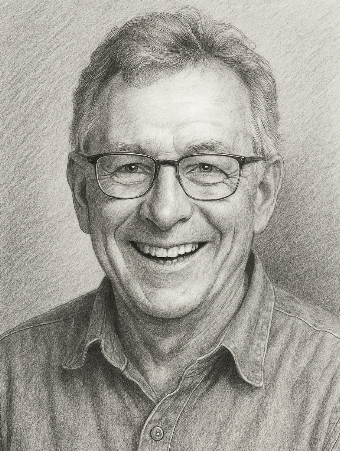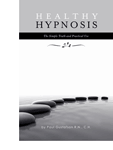

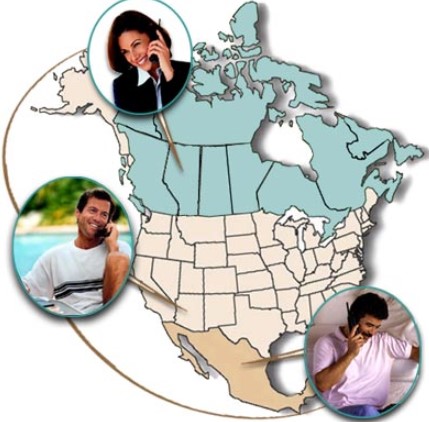
Remote hypnosis session program
 In response to COVID-19 restrictions I needed to find a way to continue helping my clients but to do it in the safest way possible for them and for myself.
In response to COVID-19 restrictions I needed to find a way to continue helping my clients but to do it in the safest way possible for them and for myself.
So now I offer a remote session hypnosis program enabling individuals to achieve their goals from the comfort and safety of home.
My remote session clients receive the same customized hypnotherapy session experience that my in-office clients receive.
This is how it works: after purchasing one of the program options I email a video explaining how hypnosis works and how to do it well. I also offer scheduling options for your first remote session appointment.
Each appointment includes a 60-minute zoom chat where I review the hypnosis process and also gather helpful information specific to your goal. I’ll also review self-hypnosis which is a simple way for you to access meditative thought on your own.
After the chat I will get busy preparing and recording your personalized hypnotherapy session and send you the MP3 within 60 minutes.
In follow-up appointments I review your progress and gather any helpful additional information to include in your next hypnotherapy session.
The goal is for clients is to press-play-once-a-day for a minimum of 3 months. Research supports long lasting success with short-term repetition. By listening to sessions on a daily basis you are training your subconscious mind to create what you consider.
Feel free to contact me with any questions: info@BurlingtonHypnosis.com Tel/text 978-398-4051
By: Paul Gustafson RN CH
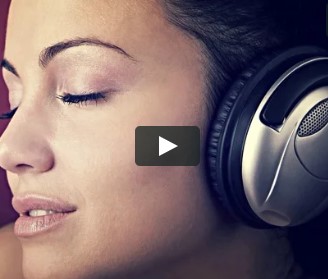
Video: Remote hypnotherapy program

The world is upside down…now what?
 As the world seems to be changing before our eyes, we are left with the daunting task of coping with it all. How do we rationalize and make sense of such an extreme situation? This is uncharted territory for all of us.
As the world seems to be changing before our eyes, we are left with the daunting task of coping with it all. How do we rationalize and make sense of such an extreme situation? This is uncharted territory for all of us.
The initial instinct is ‘fight or flight’ or panic, which has led to hoarding food supplies and even toilet paper of all things. Retail stores, banks, concert halls, schools, malls, universities, stadiums and restaurants are all closed; sports teams are on hiatus and once busy roadways are now strangely manageable.
We are all left with the task of learning social distancing, elbow bumps, frequent hand washing and sanitizing anything that is ever touched. There is no where to go and not much to do as we all try to figure out what happened to the world we knew just a few weeks ago?
So now, with all sorts of time on our hands, we can get to the business of gathering important information, but where do you turn and who do you trust? 24-hour news outlets have time to fill, competitors to beat and advertisers to satisfy.
Sure, they want to report what you need to know, but to support their bottom line, they need to keep you tuned in and the best way to do this is to maintain a sense of urgency and fear. If we take the bait, we get sucked into an emotional roller coaster resulting in significant ongoing stress and hopelessness. Overtime this can affect sleep, appetite, mood and overall healthy well-being.
So what do we do? What do we actually have control of? We can certainly control how and when we gather daily news updates. We can control the frequency our physical activities like healthy exercise which stimulates endorphin flow creating a sense of euphoric relaxation.
We can also seek out uplifting stories that have resulted from this tragedy like the Italian residents singing together from their apartment windows as a sign of unity. Or the police officer in Somerville, MA who handed out toilet paper instead of tickets
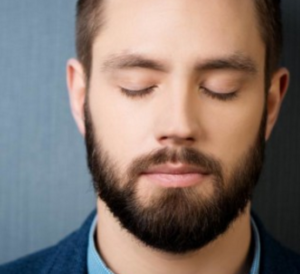 As a hypnotherapist, I teach my clients to control their pattern of thought, how they think and what they most frequently think about. Hypnosis or meditation is a great way to emotionally disconnect from outer world thoughts and to focus within; to spend more time thinking about and anticipating sustained comfortable relief.
As a hypnotherapist, I teach my clients to control their pattern of thought, how they think and what they most frequently think about. Hypnosis or meditation is a great way to emotionally disconnect from outer world thoughts and to focus within; to spend more time thinking about and anticipating sustained comfortable relief.
By repeating this process daily the subconscious becomes conditioned to follow this new relaxing path. You will still be doing what you do and going where you go, but you will feel much better about it. We can’t control what comes our way but we most definitely have control over how we see it and more importantly how it makes us feel.
You don’t necessarily need to see a hypnotherapist or attend a meditation class to get the job done. There is no shortage of great meditation apps as well as an endless array of free hypnosis sessions on YouTube. You will be pleasantly surprised how much better you’ll feel in the middle of everything that is going on around you.
By: Paul Gustafson RN CH

Coronavirus information
 What to do about upcoming medical appointments
What to do about upcoming medical appointments
While coronavirus is a new and immediate threat, it’s not the only one. It is still important to take care of any chronic medical problems to prevent them from getting worse. However, talk to your doctor to see if any upcoming appointments can be postponed, handled by Telehealth, or rescheduled. Many doctors are cancelling non-essential appointments. If you have an upcoming appointment, call your doctor’s office to confirm it is still scheduled.
Taking precautions against coronavirus for older adults
People with chronic medical problems, and those over age 65, are at increased risk of getting serious complications from the coronavirus. There is currently no vaccine to prevent coronavirus disease. Taking preventive actions is the best way to avoid contracting the virus.
Preventive measures include:
- Stay home as much as possible
- Avoid unnecessary contact with other people, don’t shake hands for example
- Avoid crowds, especially in poorly ventilated spaces
- Wash your hands often with soap and water for at least 20 seconds (use alcohol-based hand sanitizer w/ at least 60% alcohol if soap and water are not available)
- Avoid touching your eyes, nose and mouth
- Cover your cough or sneeze with a tissue
The importance of washing your hands
Handwashing is one of the easiest ways you can help prevent illness. It is especially important to wash your hands:
- Before, during and after preparing food
- Before and after caring for someone who is sick
- After using the bathroom
- After blowing your nose, coughing, or sneezing
- After touching an animal, animal feed, or animal waste
Remember that surfaces, including bathroom fixtures such as toilet handles and sink faucets, can also transmit infection.
Are you washing your hands correctly? Follow these 5 steps for the most effective hand washing technique to prevent the spread of germs.
 5 steps to washing your hands correctly
5 steps to washing your hands correctly
- Wet your hands with clean running water, turn off the water and apply soap
- Rub your hands together with the soap including the backs of your hands, between your fingers, and under your nails.
- Scrub your hands for at least 20 seconds
- Rinse your hands well under clean running water
- Dry your hands with a clean towel or air dry them
How is it transmitted?
Coronavirus is primarily transmitted by coughing and sneezing by a person infected by the coronavirus. Surfaces touched by someone with the virus may potentially be infected. This is why it is important to wash your hands, use hand sanitizer, and avoid touching your face. In addition, it’s a good idea to avoid shaking hands and minimize your contact with public use surfaces such as lifting the gas pump handle with a paper towel or using your knuckle instead of your finger to turn of light switches.
Is it necessary to wear a facemask?
The Centers for Disease Control and Prevention (CDC) does not recommend people who are well wear a facemask to protect themselves against coronavirus. The use of facemasks is recommended for health workers taking care of people in close settings or people who show symptoms of coronavirus to help prevent the spread of disease.
Is it ok to travel?
The CDC recommends avoiding nonessential travel. If you need to travel take basic prevention precautions listed above.
If I feel sick, how do I tell if it’s coronavirus or a different infection?
Coronavirus is related to common cold viruses. Symptoms are sore throat, cough, and fever. Some patients can have vomiting. You cannot tell the difference between coronavirus19 and other, more common viruses based on symptoms. This strain of coronavirus may be more virulent (causes a more severe illness) than most cold viruses.
Coronavirus symptoms may appear 2-14 days after exposure. Call your doctor if you develop symptoms and have been in close contact with a person known to have coronavirus or if you recently traveled from an area with widespread cases of coronavirus. Please don’t just walk in to your doctor’s office; they need to prepare for your arrival.
Prolonged vomiting, diarrhea, muscle aches, and joint pains are not prominent features of coronavirus infection. If you have those symptoms in addition to cold symptoms, it’s more likely that you have influenza, or “the flu”. While it is recommended that you stay home if you have cold symptoms during this pandemic, you should call your doctor if you get symptoms that suggest the flu. Adults over age 65 or with other medical problems are at increased risk of complications from the flu. There are medications that reduce the severity of the flu if taken early enough. So you should call your doctor within a day of flu symptoms to see if it would be appropriate for you to get a prescription for antiviral medications.
 How to prepare
How to prepare
It’s important to take precautions in advance in case you are required to stay in your home for an extended period of time. General emergency preparedness includes:
- Have a supply of food staples, bottled water, and household supplies like laundry detergent and bathroom items
- Make sure you have at least a 30-day supply of your prescription medications and other health supplies on hand, such as pain relievers, stomach remedies, cough and cold medicines, fluids with electrolytes and vitamins
For More Information
We take the safety and well-being of our community, members, and employees very seriously. Given the coronavirus situation is changing daily, we request that you do not visit our office in person.
For the latest up-to-date information on the coronavirus, please visit the CDC website at cdc.gov/covid19.
